topsignaljammer's blog
Every year during the college entrance examination, the school will have network problems, such as mobile phone disconnections and slow Internet speed, because the school has turned on the cell phone jammer. If we think of cell phones as handheld two-way radios, radios are subject to interference, and cell phones are no exception. Like any radio, cell phone signals are subject to interference.
In this article, Topsignaljammer will talk to you about how cell phone jammers work.
interference principle
Jamming a cell phone is like jamming any other type of radio communication. Mobile phones communicate with their serving networks through base stations. As a cell phone user drives down the street, the signal switches from one cell tower to another.
Frequency ranges of the three major operators
We know that wireless communication uses electromagnetic waves to communicate. The functional properties of electromagnetic waves are determined by their frequency. Our mobile phones must emit electromagnetic waves that meet the requirements in order to connect to our communications operator base stations. Different communication systems use different frequencies so everyone is calm and doesn't interfere with each other. The basic principle behind cell phone jamming devices is to emit the same radio frequencies as cell phones. Because the frequencies are the same, mobile phones cannot distinguish which signal is a normal base station signal, thus achieving "interference".
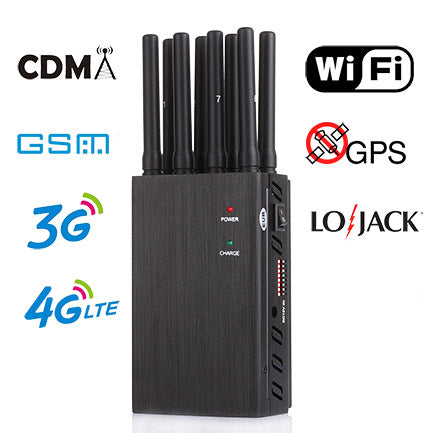
Noise covers traditional sounds.
When a base station attempts to connect to a mobile phone, it emits high-powered "noise" whenever there is a machine on the same frequency as the mobile phone. You will find that the signals emitted by your mobile phone are too complex to recognize, so you will refuse to communicate on your mobile phone. Early signal jammers can only block one set of frequencies, such as 2G, while complex jammers can block several types of networks at the same time, such as 2/3/4G. How is this multi-network interference achieved?
Actually, it's quite simple. In a looping manner, the interference frequency bands corresponding to the three signals are played repeatedly, covering three frequency bands at a time, and the intervals between loops are very small, so that the mobile phone has no chance to speak and can only sit quietly.
multiband signal jammer
2/3/4G are all covered, but what about Bluetooth and wifi? It doesn't matter, it can still be solved. The jammer has evolved again, adding Bluetooth and WiFi frequency bands to the scanning range, so that several common communication methods in society are completely covered. Many people do not understand the differences between Bluetooth, Wi-Fi and mobile data. They all seem to be wireless communication technologies. In fact, the main difference between them lies in the frequency band. In mobile communication technology, 2G mainly works in the 900-1700MHz frequency band, 3G works in the 1900-2100MHz frequency band, and 4G works in the 2300-2500MHz frequency band. Bluetooth and WiFi work at 2.4GHz.
The current main principles of signal shielding and signal jammers are to emit huge noise in the frequency band used by mobile phones, disrupting the normal signal reception and transmission of mobile phones. This small object is not only used to prevent cheating during exams, but is also often used in politics and the military to prevent terrorist attacks. However, signal jammers are not just like shopping for groceries. They are not just purchased and used casually, otherwise they may be illegal.
As we all know, full-band jammers, with their advantages of high efficiency, stability, reliable quality, and strong interference, play an important role in various places that require signal shielding, such as examination rooms, party and government agencies, large enterprises, etc. Now many families are trying to So that children can concentrate on learning, they will also choose a full-band jammer with better performance. So how to choose a full-band jammer?
1. According to signal strength
The selection of a full-band jammer should also be determined based on the signal in the environment. If the signal at the site is very strong, such as an area relatively close to the signal base station, or if there are signal base stations and amplifiers installed on the roof of the community, then the jammer must be selected. A very capable full-band jammer. Generally speaking, a full-band jammer salesperson with good service will help you choose a suitable full-band jammer based on signal strength.
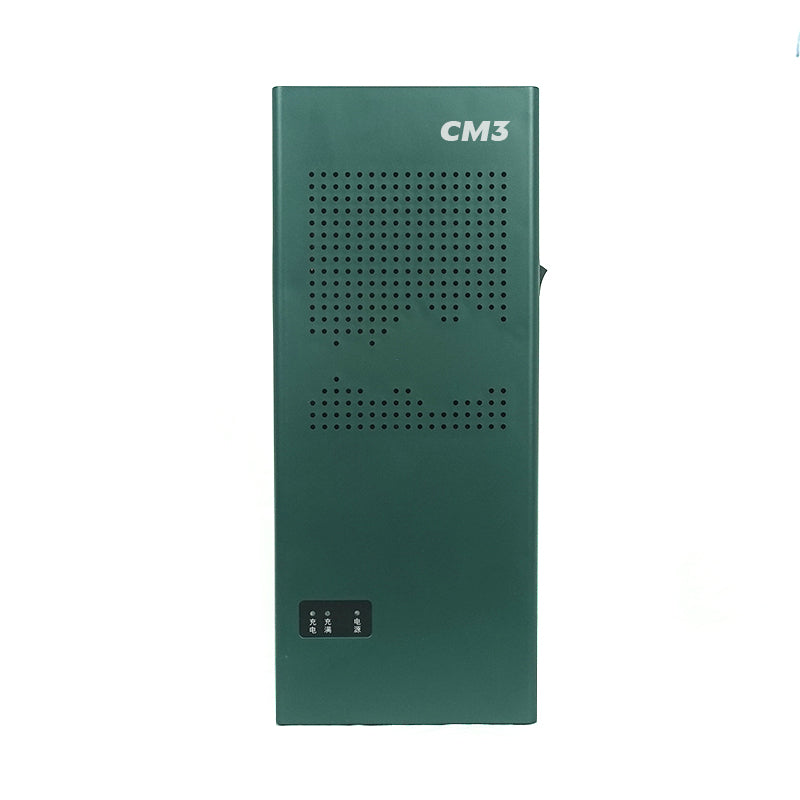
2. Look at the shielding range and power
Generally speaking, the shielding range of a full-band jammer is proportional to its power. That is to say, the greater the power, the greater the shielding range. For low-power full-band jammers, its shielding range is generally dozens of square meters. Some parents I would choose to install this kind of device in my own room, and the high-power shielding distance is several hundred square meters. This kind of device is especially suitable for large examination rooms and large enterprises.
3. Look at the location of the antenna
Generally speaking, full-band jammers can be divided into external antennas and built-in antennas. Since the antenna is external and extends outward, the former occupies a larger space compared to full-band jammers with external antennas. However, its antenna effect is much more stable, its radiation distance is farther and longer, and its coverage area is larger, so external full-band jammers are used relatively more.
It can be seen that to choose a suitable full-band jammer, we can judge based on the signal strength of the venue, the power of the jammer, and whether the antenna is external or built-in. Of course, we can also judge based on the power supply method of the full-band signal blocker. To choose from, there are generally handheld ones with built-in lithium batteries, as well as voltage power supply forms with various voltage ranges.
Many customers have called and said that I need a cell phone signal jammer that can block signals with a radius of 50 meters, an interval of 500 meters, and a radius of one kilometer, and it needs to be blocked by China Mobile, China Unicom and China Telecom.
Is there a problem with the customer's request? No problem, and specific interval requirements are given, but can it be completed? The answer is that it is relatively difficult to achieve. Why is it so difficult to achieve? Don’t signal jammers have their own shielding intervals marked in their parameters? Can’t it be completed by placing a few more units according to this interval? In fact, this is not the case. The customer is not wrong, but they don’t know the signal jammer. The shielding plan is not a fixed value. How to understand it? Texin Electronics will give you an explanation.
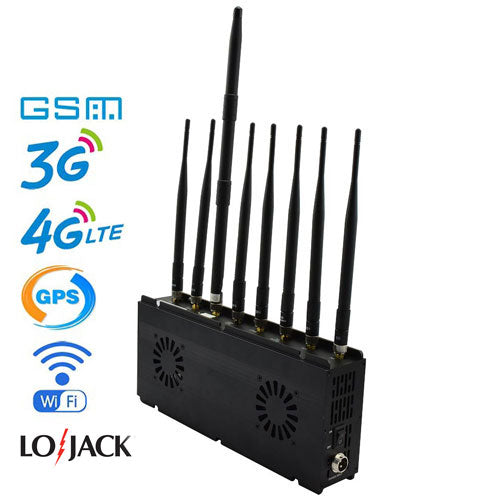
During operation, the signal jammer scans from the low-end frequency to the high-end frequency of the channel at a certain speed. This scanning speed can cause garbled interference in the message signals received by the mobile phone, causing the mobile phone to be unable to detect the normal microwave signal data sent from the base station. , making it impossible for mobile phones to establish connections with base stations within a certain range, achieving the purpose of blocking mobile phone signals.
Generally speaking, the frequency emitted by the mobile phone signal jammer interferes with the frequency of the mobile phone receiving the base station. There is bound to be a competitive relationship between the jammer and the base station. If the transmit power of the signal jammer is smaller than the channel sent by the base station to the mobile phone in the environment at that time, If the power of the signal jammer is greater than the power delivered by the base station to the mobile phone, effective shielding can be achieved.
Therefore, any jammer used in different signal environments will show different shielding intervals, and China Mobile, China Unicom, and China Telecom will all have different shielding intervals, because the base station density, base station orientation, and base station power built by these three operators cannot be the same. of.
In other words, how many meters a mobile phone signal jammer can shield is not only related to its own transmission power, but also to the distance of the base stations in the use environment (base stations are not limited to large transmission towers built on the ground, but also buildings The signal amplification antenna on the top and the signal amplification distribution in some buildings), another important factor is the obstacle. If it is a metal material, it will directly block it; if it is a reinforced concrete solid wall, it will attenuate less after penetration. 10 times; if it is a wooden board or glass material, the attenuation after penetration is relatively small.
So next time a customer asks how many meters the shielding distance needs to be, be sure to ask how far apart the base stations are in the environment, and whether they are used indoors or outdoors, whether they need to pass through walls, etc. Customers can contact our topsignaljammer to learn how to use signal jammers. Only by understanding these can we better choose the appropriate signal jammer for customers.
Shop around to select products and conduct extensive research to learn more about:
1. Investigate product quality, technical means, brand, etc.;
2. Through Internet search, initially understand and communicate with technical personnel, and listen to technical instructions;
Prison demonstration to see the effect:
Select a few and go to the site to test and demonstrate the shielding effect;
The third part examines the actual effects of the case.
After the demonstration, the application, operating status and actual effect of the product in other similar projects can be tested;
During the inspection, take your mobile phone to an approved shielding area to verify the shielding effect.
Simple and quick way to judge the signal blocker:
What devices to consider
The area to be shielded is not strict enough and the effort is not effective enough;
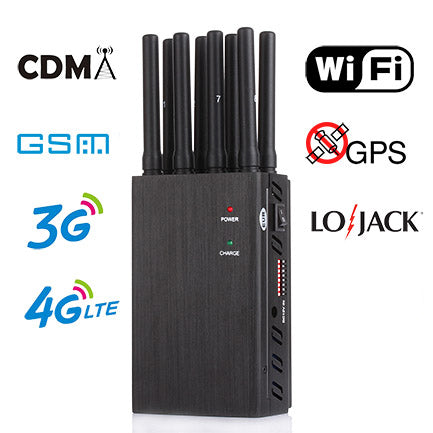
Areas that cannot be shielded have serious interference, complaints, and cannot be used normally;
There is a certain gap between biased signal detection and pseudo base station technology, and there is a gap between ideal and reality. Currently, there is no truly successful case in China;
Equipment not suitable for use
Small in size, the host and power supply are separated, and a circuit board is used internally;
An additional protective box is required, the cell phone jammer which is small in size and light in weight;
The natural heat dissipation area is small or a fan is used to assist heat dissipation;
There are multiple internal and external airflows circulating inside the equipment, and the interior is prone to corrosion;
As Wi-Fi technology continues to advance, so does the sophistication of Wi-Fi jammers. These devices are capable of interfering with Wi-Fi signals, causing disruptions and potential security risks. This article aims to delve into the mechanics of WiFi jammers, shedding light on how they operate and the techniques they employ to interfere with Wi-Fi signals.
Understanding Wi-Fi Signal Interference:
Before diving into Wi-Fi jammers, it is crucial to have a solid understanding of how Wi-Fi signal interference occurs. This section explains the basics of Wi-Fi signals, including frequency bands, channels, and modulation techniques. It also explores the factors that can contribute to signal interference, such as physical obstacles and competing wireless networks.
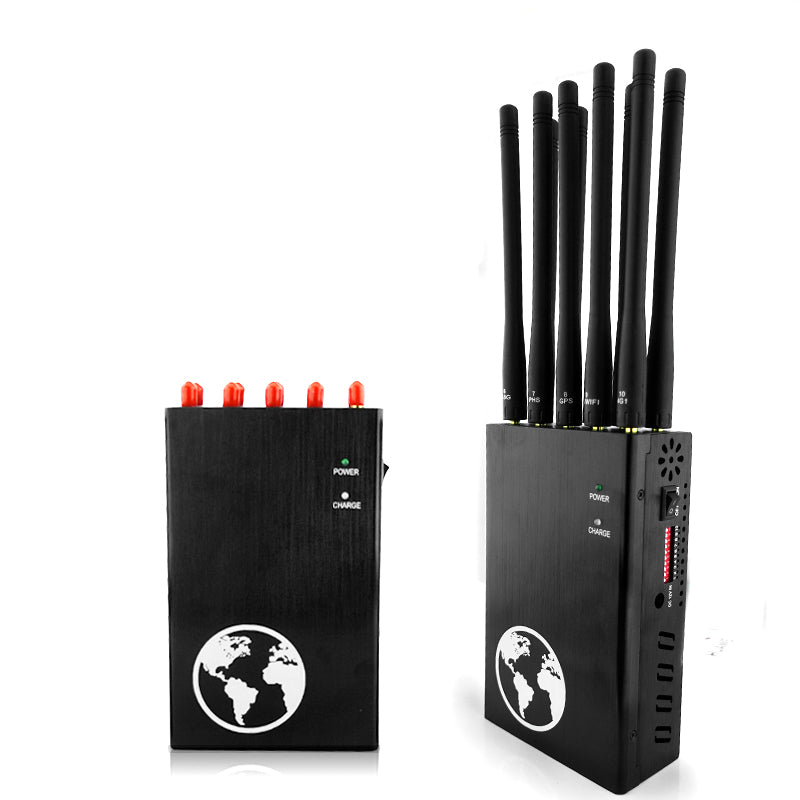
Types of Wi-Fi Jammers:
Wi-Fi jammers come in various forms, each with its own operational characteristics. This part discusses different types of Wi-Fi jammers, including deauthentication jammers, denial-of-service (DoS) jammers, and RF interference jammers. It explains the specific techniques employed by each type to disrupt Wi-Fi signals.
Deauthentication Attacks:
Deauthentication signal blockers exploit vulnerabilities in the 802.11 protocol to send deauthentication frames, forcing connected devices to disconnect from Wi-Fi networks. This section delves into the mechanics of deauthentication attacks, including the transmission of deauthentication frames, target selection, and potential consequences.
Denial-of-Service (DoS) Attacks:
DoS jammers flood Wi-Fi channels with excessive traffic or noise, rendering the network unusable. This part explores the techniques employed by DoS jammers, such as flooding the network with spoofed packets or overwhelming it with a high volume of RF interference. It also discusses the impact of DoS attacks on Wi-Fi connectivity and network performance.
RF Interference Jammers:
RF interference jammers emit disruptive radio frequency signals that interfere with Wi-Fi communication. This section explains the mechanisms behind RF interference jammers, including the generation of interfering signals, modulation techniques, and the impact on Wi-Fi signal quality and reliability.
Jammer Detection and Countermeasures:
Detecting and mitigating the effects of Wi-Fi jammers is crucial for maintaining network integrity. This part explores various techniques and technologies used to detect the presence of Wi-Fi jammers, such as spectrum analysis, anomaly detection, and intrusion detection systems. It also discusses possible countermeasures to mitigate the impact of Wi-Fi signal interference.
Legal and Ethical Considerations:
The use of Wi-Fi jammers raises legal and ethical concerns. This section examines the legal landscape surrounding Wi-Fi jammers in different jurisdictions, highlighting the potential legal consequences of using or possessing such devices. It also emphasizes the ethical considerations, including respect for others' connectivity rights and the importance of responsible Wi-Fi usage.
Future Challenges and Mitigation Strategies:
As Wi-Fi jammers evolve, new challenges arise in combating their effects. This part discusses the potential future challenges associated with Wi-Fi signal interference and explores mitigation strategies, such as improved Wi-Fi security protocols, frequency hopping, and robust network monitoring and management practices.
By understanding the mechanics of Wi-Fi jammers and the techniques they employ to interfere with Wi-Fi signals, individuals, network administrators, and policymakers can better comprehend the risks and challenges associated with Wi-Fi signal interference. This knowledge can inform the development of effective countermeasures and regulatory frameworks to safeguard Wi-Fi networks and ensure a secure and reliable wireless communication environment.
Wi-Fi has revolutionized the way we connect and communicate, but with its widespread adoption comes a concerning trend: the rise of WiFi blockers. This article explores the implications and concerns surrounding the increasing use of Wi-Fi blockers, shedding light on the potential consequences for individuals, businesses, and society as a whole.
Understanding Wi-Fi Blockers:
This section provides an overview of Wi-Fi blockers, explaining how these devices work and their primary purpose of disrupting or blocking Wi-Fi signals. It also touches upon the various types and capabilities of Wi-Fi blockers available in the market.

Privacy and Security Concerns:
One of the main implications of Wi-Fi blockers is the impact on privacy and security. This part examines the potential risks associated with Wi-Fi blockers, including unauthorized access to sensitive information, network vulnerabilities, and the potential for malicious activities.
Business Disruption:
Wi-Fi blockers can have detrimental effects on businesses and organizations that heavily rely on wireless networks. This section discusses the disruption caused by Wi-Fi blockers in various industries, such as hospitality, retail, and healthcare, and highlights the financial and operational implications.
Legal and Regulatory Landscape:
The use of Wi-Fi blockers raises legal and regulatory questions. This part explores the legal framework surrounding Wi-Fi blockers in different jurisdictions, including their legality, restrictions, and penalties. It also delves into the challenges of enforcing regulations and the need for consistent policies.
Ethical Considerations:
The ethical implications of Wi-Fi blockers are examined here, emphasizing the impact on the rights and freedoms of individuals. It discusses the ethical responsibility of individuals and organizations in using Wi-Fi blockers and the importance of considering the potential collateral damage.
Mitigation Strategies:
To address the concerns associated with Wi-Fi blockers, this section presents mitigation strategies for individuals and organizations. It covers measures such as network monitoring, encryption, signal strength optimization, and the use of intrusion detection systems.
Public Awareness and Education:
Raising public awareness about the risks and implications of Wi-Fi blockers is crucial. This part explores the role of education and awareness campaigns in promoting responsible Wi-Fi usage, highlighting the need for collaboration between stakeholders.
Future Outlook:
The article concludes by discussing the future outlook of Wi-Fi blockers and the importance of striking a balance between legitimate uses, security concerns, and regulatory frameworks. It emphasizes the need for ongoing research, technological advancements, and policy development to mitigate the risks associated with Wi-Fi blockers.
By understanding the implications and concerns surrounding the rise of signal blockers, individuals, businesses, and policymakers can make informed decisions to protect their networks, privacy, and security in an increasingly connected world.
Wi-Fi has revolutionized the way we connect and communicate, but with its widespread adoption comes a concerning trend: the rise of WiFi blockers. This article explores the implications and concerns surrounding the increasing use of Wi-Fi blockers, shedding light on the potential consequences for individuals, businesses, and society as a whole.
Understanding Wi-Fi Blockers:
This section provides an overview of Wi-Fi blockers, explaining how these devices work and their primary purpose of disrupting or blocking Wi-Fi signals. It also touches upon the various types and capabilities of Wi-Fi blockers available in the market.

Privacy and Security Concerns:
One of the main implications of Wi-Fi blockers is the impact on privacy and security. This part examines the potential risks associated with Wi-Fi blockers, including unauthorized access to sensitive information, network vulnerabilities, and the potential for malicious activities.
Business Disruption:
Wi-Fi blockers can have detrimental effects on businesses and organizations that heavily rely on wireless networks. This section discusses the disruption caused by Wi-Fi blockers in various industries, such as hospitality, retail, and healthcare, and highlights the financial and operational implications.
Legal and Regulatory Landscape:
The use of Wi-Fi blockers raises legal and regulatory questions. This part explores the legal framework surrounding Wi-Fi blockers in different jurisdictions, including their legality, restrictions, and penalties. It also delves into the challenges of enforcing regulations and the need for consistent policies.
Ethical Considerations:
The ethical implications of Wi-Fi blockers are examined here, emphasizing the impact on the rights and freedoms of individuals. It discusses the ethical responsibility of individuals and organizations in using Wi-Fi blockers and the importance of considering the potential collateral damage.
Mitigation Strategies:
To address the concerns associated with Wi-Fi blockers, this section presents mitigation strategies for individuals and organizations. It covers measures such as network monitoring, encryption, signal strength optimization, and the use of intrusion detection systems.
Public Awareness and Education:
Raising public awareness about the risks and implications of Wi-Fi blockers is crucial. This part explores the role of education and awareness campaigns in promoting responsible Wi-Fi usage, highlighting the need for collaboration between stakeholders.
Future Outlook:
The article concludes by discussing the future outlook of Wi-Fi blockers and the importance of striking a balance between legitimate uses, security concerns, and regulatory frameworks. It emphasizes the need for ongoing research, technological advancements, and policy development to mitigate the risks associated with Wi-Fi blockers.
By understanding the implications and concerns surrounding the rise of signal blockers, individuals, businesses, and policymakers can make informed decisions to protect their networks, privacy, and security in an increasingly connected world.
A portable signal jammer is a device that can block radio signals, which can effectively prevent the transmission and reception of radio signals. This kind of device is usually used to protect personal privacy and prevent information leakage, so it has been widely used in some specific fields.
Why use a portable signal jammer? What does it do? In what fields is it used?
The main function of the portable signal jammer is to prevent the transmission and reception of radio signals, thereby protecting personal privacy and preventing information leakage. It can be used in the following areas:
1. Military field: In military operations, portable jammers can prevent enemy monitoring and interference and protect military secrets.
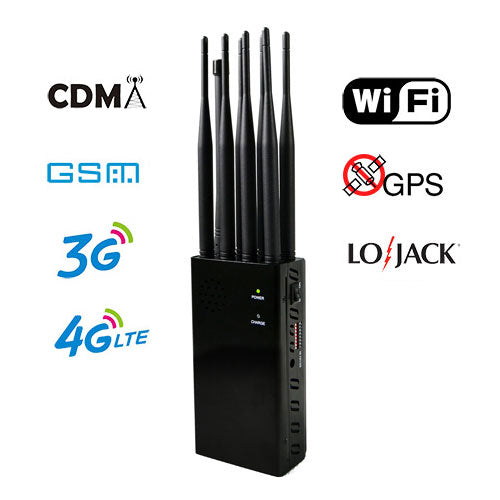
2. Business field: In business negotiations, portable jammers can prevent competitors from eavesdropping on business secrets and protect business interests.
3. Personal privacy field: In personal life, portable jammers can prevent others from eavesdropping on personal communications and location information, and protect personal privacy.
Portable signal jammers can help the above areas solve the following problems:
1. Protect confidential information: In the military and commercial fields, portable signal jammers can prevent confidential information from being stolen and leaked.
2. Protect personal privacy: In personal life, portable signal jammers for cell phone can prevent personal communication and location information from being stolen and leaked by others. How to choose a portable signal jammer and what issues should you pay attention to?
When choosing a portable signal jammer, you need to pay attention to the following issues:
1. Shielding range: Different models of signal jammers have different shielding ranges and need to be selected according to actual needs.
2. Signal type: Different models of signal jammers can block different types of signals and need to be selected according to actual needs.
3. Brand and quality: Choosing a well-known brand and high-quality portable signal jammer can guarantee the performance and service life of the product.
Effectively signal jammers various walkie-talkie signals, blocks (interferes with) the communication between the walkie-talkie and the receiver, and prevents various wireless stealth headsets (including anti-shielding and anti-detection headsets) grafted to the walkie-talkie system from working properly (strong noise or no sound) )
It only blocks the intercom signal and does not affect the normal operation of other electronic equipment.
Environmental protection, the amount of electromagnetic radiation has been strictly tested by the Environmental and Health Related Product Safety Research Institute of the Chinese Center for Disease Control and Prevention. The measured values of electromagnetic field intensity at each sampling point are far lower than the "Electromagnetic Radiation Protection Regulations" (GB8702-88) and are not harmful to the human body. Influence.
Low power consumption, it only blocks the intercom or receiving signals in the examination room, and does not interfere with the built-in switching power supply of intercom outside the examination room, ensuring the stability and accuracy of the signal.
The operation is simple, the antenna is installed correctly, and it operates automatically when it is turned on.
Technical indicators:
Effective shielding range: 20 meters (the emitting 5W walkie-talkie is 100 meters away from the examination room)
The smaller the power of the intercom and the further away from the examination room, the greater the shielding range.
Transmission frequency range: full frequency band.
Transmitting power: 3W.
Ambient temperature:-20-+55℃..
Relative humidity:35-85%
Power adapter: input AC160-240V50/60Hz.
Body size: 210mm*139mm*50mm.
Net weight: 1Kg.
Editing of applicable places for cell phone signal jammers.
1. Protection of communication signals of border operators.
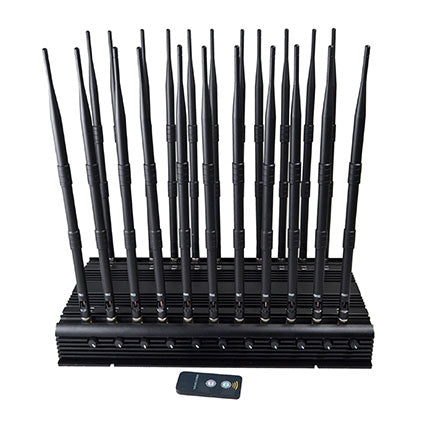
2. The combat needs of the troops.
3. Detention centers, reform-through-labor teams, and large and medium-sized prisons.
4. Large gathering place.
5. Safety precautions for leaders’ visits.
6. College entrance examination, adult college entrance examination, self-study examination and various colleges and universities.
7. Various large and medium-sized conference rooms, concert halls, and theaters for party and government agencies and enterprises.
8. Gas stations, oil depots, oil fields, gas stations and other flammable and explosive places.
With the popularity of mobile phones, the demand for mobile phone signal blocking in various conferences, exams, etc. has also increased significantly. Therefore, cell phone signal jammers naturally have a wide market. However, the vast majority of customers lack sufficient understanding of mobile phone signal jammers, and often choose high-power jammers one-sidedly for the sake of good results, causing many hidden dangers.
The principle of the mobile phone signal jammer is to emit interference signals through broadband and interfere with the uplink signal of the mobile phone to achieve the function of blocking the operation of the mobile phone. Therefore it is itself a signal emission source. Since it is a signal emission source, there is naturally radiation. The current transmitter power of the jammer ranges from 1W to 480W according to the needs of use. How strong is this transmit power? For comparison, the maximum transmit power of a GSM mobile phone is 2W, and the usual transmit power of a GSM macro base station is between 20W and 40W. The transmitting power of jammers generally used for exams and conferences is between 10W and 60W.
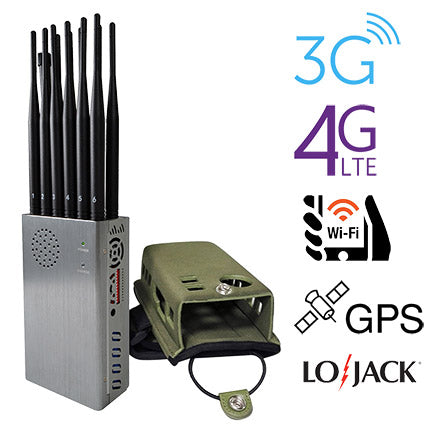
Normally, for general examinations and small meetings, choosing a mobile phone jammer with a transmission power of 2W-10W can achieve good results. However, according to our investigation of major schools and important conference locations, many places often pursue high-power jammers one-sidedly. For example: a school with more than 20 classrooms installs a jammer in each classroom, and selects The transmitting power is 30W, and after the exam, due to the lack of attention to use, it often happens that a small number of jammers are not turned off in time and continue to transmit for several weeks. Especially in a certain elementary school, after a certain exam, the signal blocker continued to be turned off for 2 weeks. It was not until we investigated the scene that we found that the jammer continued to be turned on on the side of the podium in a classroom full of primary school students! This really made us break into a cold sweat!
Therefore, I hereby strongly appeal to all units that need to use mobile phone signal jammers:
1. Do not blindly choose a high-power jammer. For a classroom, choosing a jammer with a transmit power of 2W is enough to achieve the shielding effect.
2. After completing use, be sure to turn off the shield in time to avoid continued radiation.
3. Be sure to choose a jammer produced by regular manufacturers. Jammers produced by informal manufacturers often deliberately increase the transmission power in order to achieve good shielding effect.
For the health of you and your family, please forward it to the public, thank you!
